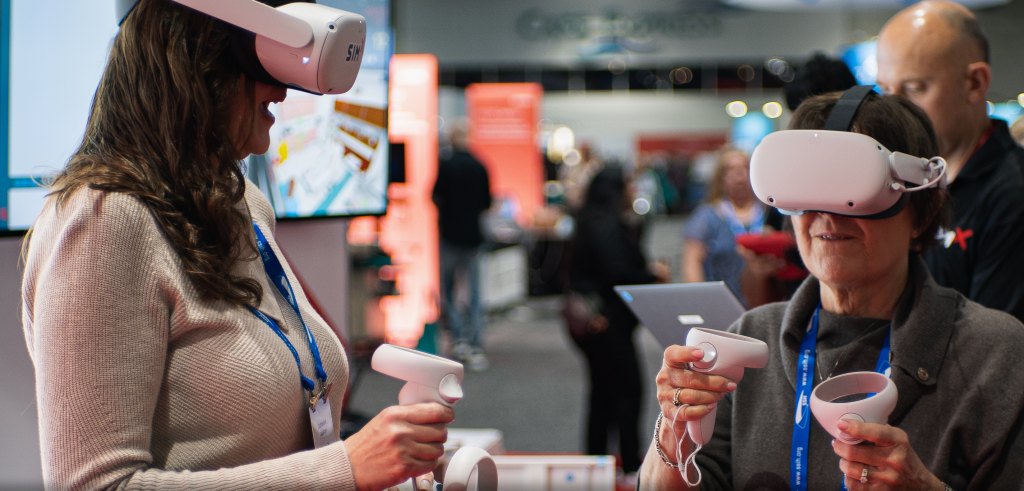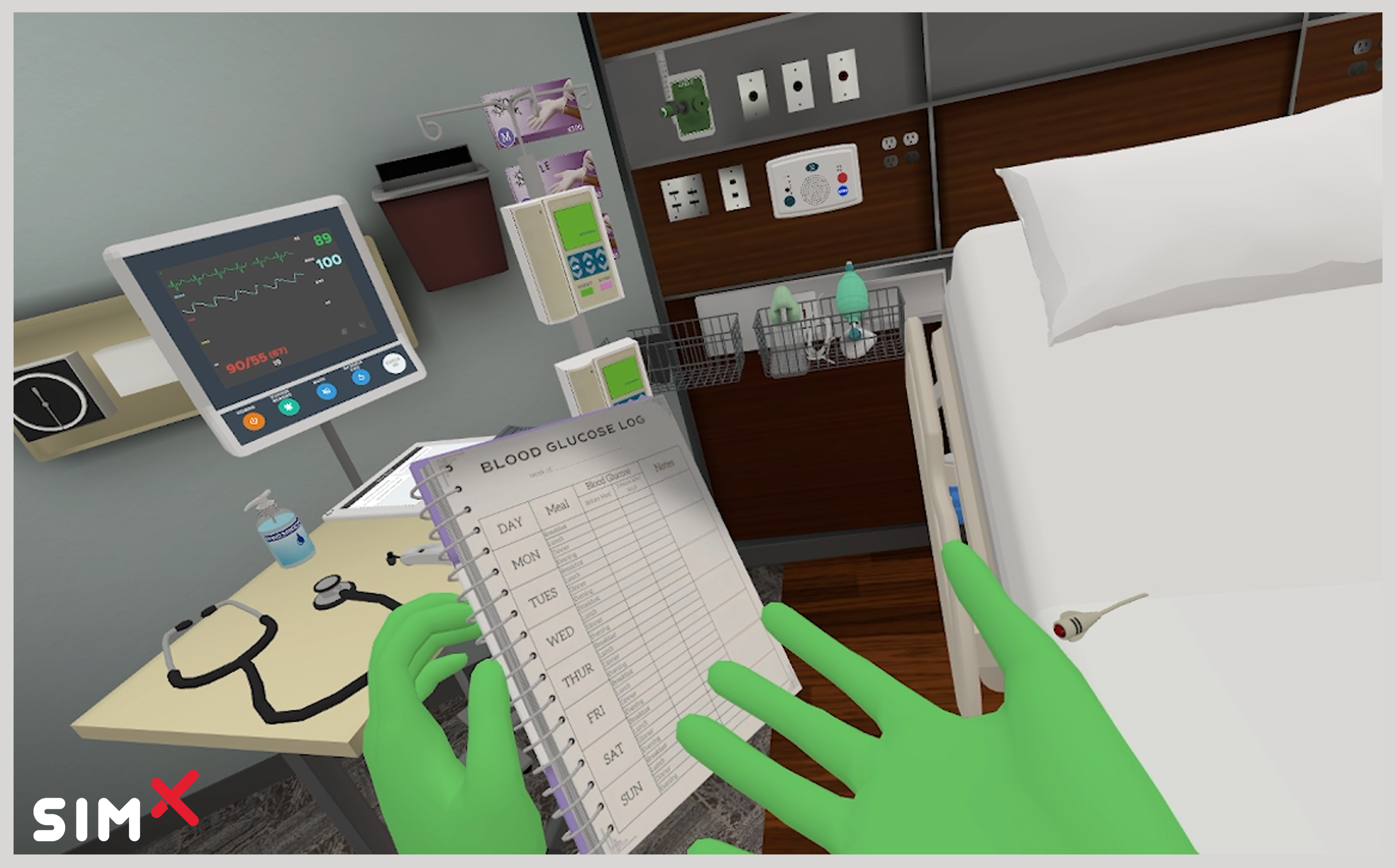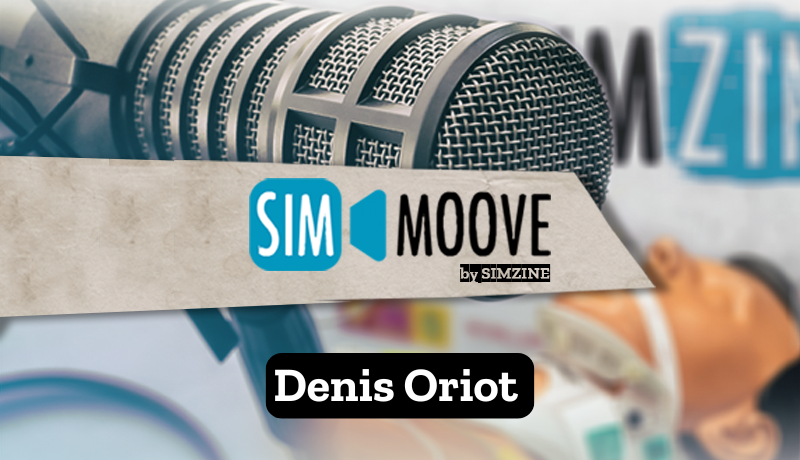Virtual Reality (VR) offers exciting possibilities, but some users may experience nausea, dizziness, or discomfort, often referred to as VR sickness. However, with the right setup and knowledge of motion tracking and system features, such as those in SimX, you can significantly reduce these symptoms and enjoy an immersive experience.
Advertorial

If you’ve ever experienced nausea, dizziness, or headaches after using a Virtual Reality (VR) headset, it’s possible you’ve suffered from VR- or cyber-sickness. Like motion sickness, VR sickness can happen for various reasons and may emerge after only a few minutes in the headset or a few hours. While it’s true some VR users do experience symptoms of VR sickness, it is a myth that VR will always make you sick. As you learn more about the features and circumstances that typically cause VR motion sickness, you can start to optimize your experience and enjoy any content you choose. This is especially important for simulation training, where you may be engaged in a VR headset for prolonged periods.
VR and Motion Sickness
There’s little difference between the nausea you feel from VR and what you may feel while driving on windy or rough roads. Both forms of motion sickness happen because your brain is receiving mixed signals; you are standing or sitting still, but everything around you is generating motion. In other words, there is a difference between what you see and what your body is doing. Your senses report contradictory information to the brain, and the result is disorientation and physical symptoms. However, VR sickness can be mitigated depending on certain system features or even software quality. By optimizing your VR experience, you may be able to completely eliminate motion sickness.
High-Quality Content
Optimizing your VR experience includes choosing a headset and content that allows you to seamlessly navigate your virtual space. Experts continue to research, test, and push the boundaries of both hardware and software to make VR more enjoyable and comfortable for a larger audience. One specification to pay attention to when searching for the right headset is the Degrees of Freedom (DoF) tracking system, which allows a user’s movement to be translated into virtual movement. Older generation headsets are limited to 3 Degrees of Freedom (3DoF), which refers to the number of directions a rigid object can move in 3-dimensional space. 3DoF systems can only track a user’s rotational movement. Newer models (Oculus Quest and HTC Vive, both used at SimX) operate with 6DoF, which also tracks a user’s transitional motion–moving forward, backward, up, and down (see sources).
Motion tracking technology plays a large role in a user’s comfort levels and well-being while in the headset. Using headsets with only 3DoF limits translatable movement, increasing the mental disparity between a user and the virtual avatar. In addition to quality tracking features, pay attention to the frames per second (FPS) of your VR content. Lower frame rates increase latency, which can cause software to lag and look choppy. Lag will make VR motion sickness worse as it breaks the immersion and increases disparate motion, which causes disorientation, nausea, and dizziness.
Keep in mind that extremely high FPS rates and advanced graphics may not always be the solution if your internet connection or other system functionalities cannot support it. SimX runs on an optimized low-poly model to increase performance and reduce lag while avoiding any issues that come with over-producing our graphics.
Locomotion and SimX Room Scale
If you often experience motion sickness in VR, your movements in virtual space might be to blame. How you move in VR is called locomotion, which refers to the technology that enables the user to move in the virtual environment while using a relatively small real-world space. Locomotion is an essential part of the VR user experience and can be the main factor in whether or not you start feeling sick. To avoid sickness and nausea, movements in VR should mimic real-life movement in your physical space. (see sources)
Each SimX virtual patient encounter utilizes the wireless headset’s room scale technology to directly translate a user’s physical movement into the VR environment. For example, SimX users must reach for items or tools rather than selecting them from a drop-down list of options. By physically participating in the virtual space, users receive fewer mixed signals that cause disorientation, dizziness, and nausea. Additionally, with SimX, if a user is interacting with a virtual patient on the ground, they must kneel down in their physical space to provide the necessary treatment throughout the scenario. Instead of using a joystick or teleporting to navigate a hospital room, users must walk around the patient as if the obstacles were there in real life. Mimicking natural and intuitive movements helps improve learning as the virtual patient encounters reflect real-world patient scenarios.

In some VR applications, locomotion is achieved through joysticks or teleporting–a point-and-click action–with hand-held controllers to move a user’s virtual avatar in the environment. When using joysticks or teleporting around a virtual space, pay attention to acceleration (fast, unexpected movements), speed, and visual quality, as these will greatly influence your comfort and sickness levels. While teleportation can be more accessible as it requires no real-life movement, it is often the source of VR sickness.
Teleportation in VR can significantly enhance accessibility for users who may find traditional locomotion methods challenging. By allowing users to move through virtual environments with a simple point-and-click action, teleportation minimizes the physical strain that can come with standing, squatting, kneeling, or walking in VR. This is especially beneficial for individuals with mobility limitations, as it enables them to engage in immersive experiences without the discomfort that can arise from extended movement. SimX does offer options for users to navigate each scenario with teleportation; however, it should be noted that choosing to utilize teleportation increases the possibility of VR motion sickness.
Get in a Headset
To truly know if a VR experience will cause motion sickness, you have to try it for yourself. Relying on hearsay or how another user felt after using VR will continue to perpetuate the myth that VR makes you sick. In reality, VR can be optimized in many different ways to improve your experience and increase a user’s comfort level in any VR program. What content you engage with, the quality of your system, and your hardware specs all influence VR sickness symptoms.
Whether it’s your first, fifth, or fiftieth time in a headset, be sure to take frequent breaks (every 20 minutes) to reorient, get a glass of water, and prepare for your next VR session. Extended time in VR not only increases the likelihood of motion sickness, it can also cause eye strain or headaches. Utilize the SimX in-headset tutorial to become familiar with the controls and tools you will use in every SimX scenario. SimX also offers demos for interested customers, so you can try SimX anywhere! Our representatives can help you optimize your VR sessions for a truly immersive and engaging VR experience.
In summary, while VR sickness can be a concern for some users, it’s essential to understand that it doesn’t affect everyone, and there are effective strategies to enhance your VR experience. By choosing high-quality hardware, optimizing your locomotion methods, and being mindful of your session duration, you can significantly reduce the risk of discomfort. Remember that the world of VR is constantly evolving, with advancements aimed at creating more immersive and comfortable experiences.
So, if you’ve been hesitant to dive into VR due to fears of nausea or dizziness, consider giving it a try. Each experience is unique, and with the right setup and techniques, you may find yourself fully immersed in a world of limitless possibilities. Don’t forget to take breaks and listen to your body; this will not only enhance your enjoyment but also keep you feeling good. VR has the potential to transform how we learn, train, practice, and connect—so gear up and explore!
Sources:
https://virtualspeech.com/blog/degrees-of-freedom-vr
https://www.circuitstream.com/blog/vr-locomotion
READ ALSO






































